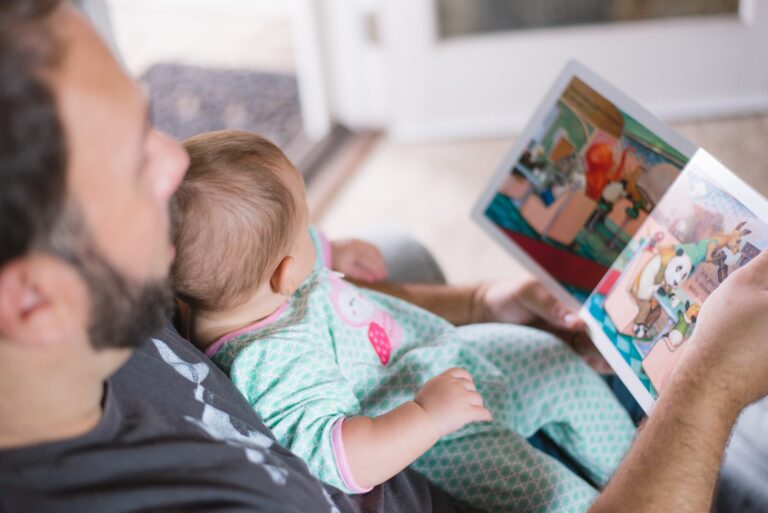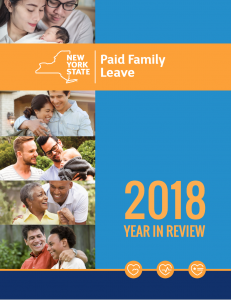The widespread closure of schools and day care centers during the COVID-19 pandemic has highlighted the extent to which mothers still provide the bulk of childcare, even when they also work for pay. Parental leave is a key policy lever that can help encourage a more equal sharing. Studies show that fathers who spend time at home with a new baby continue to play a more hands-on role months and even years later, paying dividends to children and families and advancing gender equality at home and at work.
In virtually all countries, policies designed to encourage fathers to take leave have been grafted onto pre-existing policies that prioritise maternity leave. That is, the norm around the world is to provide several months of maternity leave and just a few weeks of paternity leave. Countries seeking to promote men’s leave add on a supplemental ‘parental’ leave, and make a portion of this period usable only by fathers. But even the most progressive of these policies make more total time available to mothers than to fathers.
Australia and state policies enacted in the United States take a dramatically different approach: they eschew sex-based policies entirely, opting instead for only gender-neutral leave. Thus, while the overall length of benefits offered in both countries is rather short (and the US still, shockingly, lacks a federal policy guaranteeing paid leave), they are important innovators in this respect.
However, as I explore in a recently published article, even gender-neutral leave can facilitate or disrupt gender norms. In Australia, men claim only about 1% of parental leave benefits. In some US states, by contrast, men account for almost 40% of total claims, a rate almost on par with international leaders such as Sweden and Iceland. The US policies have been little discussed in the international literature on leave, probably because they have been implemented at the state level rather than the national level. However, individual states such as California and New York have economies that are larger than most countries, and collectively the state policies cover a sizeable share of the US population.
Different models of gender-neutral benefits
Australia’s national parental leave scheme, launched in 2011, and American state policies enacted over the past twenty years both depart from the sex-specific maternity and paternity leaves adopted in most countries—however, they do so in very different ways.
Australia offers 18 weeks of benefits to a ‘primary carer’ and 2 weeks of benefits to a ‘secondary carer.’ The state policies in the United States, by contrast, offer equal and non-transferable benefits to each ‘parent.’ The more recently-enacted state laws provide 12 weeks to each parent; older ones provide between four and eight weeks to each parent. Some states offer a short period of additional benefits to birth mothers for time spent recovering from the physical effects of childbirth.
Australia’s policy is gender neutral, but it allows individual families to choose which parent receives ‘primary’ carer benefits and which receives ‘secondary’ carer benefits. Women claim virtually all of the former and men claim virtually all of the latter. In the US, by contrast, each legally-recognised parent receives individual benefits, and any that are not claimed are simply forfeited. While rarely labeled as such, US policy is functionally an unusually aggressive ‘use-it-or-lose-it’ approach, in that fully half of available benefits are reserved for fathers. And it seems to be having its intended effect of helping shift gender norms: men make up a large and growing share of claimants. This is an important achievement (although, as I discuss in a different article, it systematically disadvantages single-parent families).
Flat benefit or percentage of regular income
Another important difference between the policy schemes is the compensation structure. Australia provides a flat payment set at the national minimum wage, currently about AU$770 per week (or US$560), funded out of general revenue. This structure means that low-wage workers receive close to their regular income. In fact, because it is a flat rate, part-time workers may receive more in parental leave benefits than they would typically receive in income. Higher paid workers, by contrast, receive a comparatively small share of their regular income, and very high earners are excluded from the program entirely.
In the US state programs, benefits are a percentage of regular income, ranging from 60% up to 100% depending on the state, and they are funded by a small payroll tax. Virtually all workers, including high earners, are covered, but benefits are capped around the median wage. The caps currently range from about AU$1,075 (US$780) to about AU$1,875 (US$1360), more than twice the maximum benefit available in Australia.
Middle or higher earning workers will receive a more generous benefit under the US structure than under the Australian structure. Since both Australia and the United States have gender wage gaps, men do comparatively better under the US approach.
As part of my research, I spent four months in Australia as a visiting scholar at Melbourne Law School’s Centre for Employment and Labour Relations Law. During this time, I interviewed key stakeholders in industry, labour, and government about the Australian leave policy. Several of the people I spoke with identified the flat and capped nature of the benefits (limited to the minimum wage) as a factor that discourages men from claiming parental leave benefits. They suggested that the payments ‘feel’ more like income support than an earned work benefit. Other stakeholders I spoke with noted the same factors but saw them as an asset, in that the policy is comparatively generous to low-wage workers and particularly to part-time workers.
Interaction between public benefits, employer benefits, and unpaid leave rights
Another key difference between the countries’ leave policies that emerged in my research—and that is less discussed in the international literature on leave—is the interaction between government-provided benefits, employer-provided benefits, and the scope of unpaid leave rights. In Australia, the government’s paid parental leave scheme works in tandem with a pre-existing policy that provides a full year of unpaid leave to new parents. Many new mothers in Australia opt to receive the governmental paid leave benefits, any maternity or parental leave benefits provided by their employers, and any other accrued paid time off sequentially to provide income through as much of the year of unpaid leave as possible.
In the United States, by contrast, existing federal law and most private employer policies allow (at most) twelve weeks of unpaid leave. It is rare for companies to voluntarily offer paid leave, and those that do (and operate in states that mandate paid leave) generally structure their programs so that the benefits they were already providing satisfy their obligations under the law. Thus, the total period of available leave does not exceed the total period of available benefits, meaning new parents of both sexes return to work relatively quickly.
Social norms and messaging
Finally, my paper explores the potential significance of messaging around the gender-neutral leave benefits, as well as larger social norms. The US state informational materials implementing the policies feature prominently pictures of new fathers on leave, while the Australian website assumes primary care benefits will be claimed by women. Additionally, new mothers in Australia generally return to work part-time, while those in America more typically return to full-time work, further inscribing gender norms regarding care.
Figure 1: The cover of New York’s informational material on paid parental leave
As the world emerges from the pandemic, many countries are looking to adopt policies that can encourage more equal sharing of child care responsibilities. The Australian and American parental leave policies offer important lessons in structuring a gender-neutral parental leave.






I’m just interested in this topic and I think rights should be equalized here. It doesn’t matter if it’s mom or dad, the benefits should be the same. Thanks for such an informative post